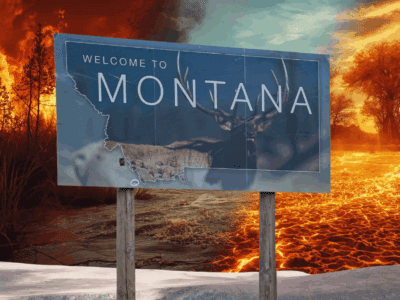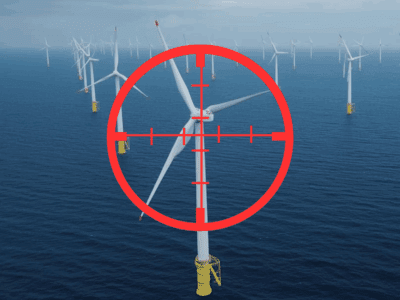Region: California
Bread and Circuses and Journalism
How to get readers interested in housing and land use? Bring in reality stars!
If you want to get a good sense of the travails of the modern press, look no further than Politico’s recent writeup of SB 79, Senator Scott Wiener’s new bill to mandate upzoning around transit stops. Importantly, this isn’t because it’s a bad article but precisely because it’s a good article (and not just because …
Continue reading “Bread and Circuses and Journalism”
CONTINUE READINGCalifornia Must Invest in Climate and Communities to Drive Climate Progress
The state has pioneered an approach—what’s worked, and what’s next?
As solar and other climate infrastructure construction accelerates, and with Californians concerned both about the cost of living and about seeing local opportunities result from climate projects, the conversation about community benefits (commitments to hiring and other local investments made by developers in connection with new projects) has grown increasingly animated in California and even …
Continue reading “California Must Invest in Climate and Communities to Drive Climate Progress”
CONTINUE READINGClean up on aisle 131
Legislature should fix flaws in SB 131
As this year’s legislative session comes to a close, I want to highlight legislative action that I hope happens in the next session. I noted earlier that AB 130 and SB 131 both were important steps to advance infill housing in California by creating exemptions for infill housing from the California Environmental Quality Act (CEQA). …
Continue reading “Clean up on aisle 131”
CONTINUE READINGYoung Climate Plaintiffs Won Big in Montana. Can They Again?
The Drain is a weekly roundup of environmental and climate news from Legal Planet.
One of the biggest climate victories to date belongs to 19-year-old Eva Lighthiser and the other Montana youth climate plaintiffs who won their landmark case against state officials and saw it upheld in the state Supreme Court. Now, some of those same young people — Lighthiser included — are headed back to court next week …
Continue reading “Young Climate Plaintiffs Won Big in Montana. Can They Again?”
CONTINUE READINGCalifornia Issues the First State Guidance for Corporate Climate Risk Disclosure
CARB takes an important step in an emerging field of climate policy
The California Air Resources Board this week released draft guidance for corporate climate-related financial risk disclosure, providing some insight into what large companies will be required to report beginning in January 2026. This is a quiet but fairly monumental step in climate risk disclosure in the US, and a reminder of the power of state …
Continue reading “California Issues the First State Guidance for Corporate Climate Risk Disclosure”
CONTINUE READINGTrump’s War on Wind is Dumb. It also Makes Sense.
The Drain is a weekly roundup of environmental and climate news from Legal Planet.
The Trump administration’s attack on wind energy feels dumber and dumber every day. Let’s see if we can make it make some sense. After that, the major headlines of the week. Last Friday, his Transportation Department withdrew $679 million for offshore wind projects at 12 ports. Last month, the administration sent a stop-work order to …
Continue reading “Trump’s War on Wind is Dumb. It also Makes Sense.”
CONTINUE READINGHow to Dissent? Learn American History
The Drain is a weekly roundup of environmental and climate news from Legal Planet.
It sounds cliché, but when you face a crisis, it helps to remember times that you’ve overcome adversity. That’s the power of history. And it’s one of the reasons I think the new PBS documentary “Clearing the Air: The War on Smog” is crucial to share right now. In the 1940s, dark, smoky clouds crept …
Continue reading “How to Dissent? Learn American History”
CONTINUE READINGWhy are California’s Zero-Emission Truck Standards Under Attack?
They are highly effective, as CLEE’s new Factsheet series on Zero-Emission Trucks documents.
The world of zero-emission trucks is at a pivotal moment. On one hand, the technology is rapidly advancing, and manufacturers are producing a growing number of zero-emission truck models in Europe, China, and here in California. Yet on the other hand, this clean transition is facing significant political and legal challenges from the U.S. federal …
Continue reading “Why are California’s Zero-Emission Truck Standards Under Attack?”
CONTINUE READINGLeveraging Cap-And-Trade Proceeds for Long-Term Utility Bill Savings and Pollution Reduction
State leaders have an opportunity to expand the benefits with cap-and-trade reauthorization.
California’s decades-long role as a climate action pioneer is facing serious headwinds. While the Trump administration and its allies have launched a full-scale attack on clean technologies, state leaders are also wrestling with an electorate now more focused on lowering prices than environmental protection. Energy costs stand in the middle. This dynamic is playing out …
CONTINUE READINGWatch “Clearing the Air: The War on Smog”
The American Experience’s “Clearing the Air: The War on Smog” tells an extraordinary story. It premieres on PBS this Tuesday.
A few years back, a colleague of mine, who I very much wanted to remain at UCLA, approached me because he was contemplating accepting an offer at a Washington, D.C. law school. He feared remaining in Los Angeles, even though he wanted to stay, because he didn’t want his young daughter exposed to the southland’s …
Continue reading “Watch “Clearing the Air: The War on Smog””
CONTINUE READING










